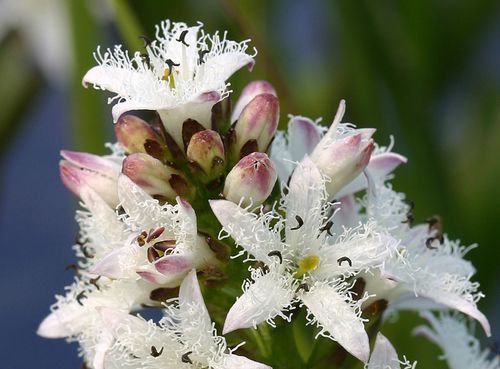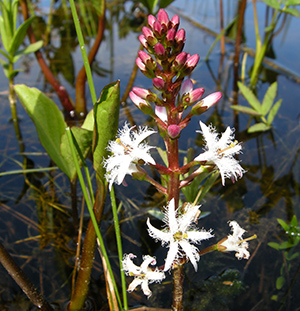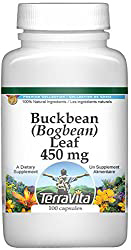Contents

The buckbean plant has been used in phytotherapy since the 16th century. As it was not a Mediterranean plant, it was not known to classical Greek physicians. Today, it is a rare plant, and in some countries, even an endangered species.
Buckbean Plant Scientific Facts
- Other names: Marsh trefoil, bogbean plant.
- French: Trefle d’eau.
- Environment: Marshes and lagoons of western Europe and North America. Scarce plant.
- Description: Water vivacious plant of the Menyanthaceae family, growing from 20 to 30 cm high, with a thick, fleshy, creepy stem, buried in the marshes. It has long-petioled leaves, divided into three folioles and pink flowers growing in terminal clusters.
- Parts of the plant used medicinally: The leaves.
Healing Properties and Warning

The leaves of the buckbean plant contain a bitter glycoside (menyanthin), which gives the plant its stimulating properties on the digestive system. It increases appetite, stimulates digestive secretions, and as a rule, promotes digestion. It is recommended for digestive atony, bloated stomach, or chronic gastritis. It has similar effects to those of the gentian plant.

Buckbean also contains flavonic substances and alkaloids, which have not been well studied yet. These substances could explain its febrifuge, laxative, and emmenagogue properties. The plant is also used for influenza.
WARNING! When taken in high doses, it is purgative and an emetic (provokes vomiting).
How to use Buckbean
- Infusion with 15-30g of leaves per liter of water. Drink a cup before each meal.
- The juice of the plant when fresh. The recommended dose is 20 ml dissolved in water or milk twice or thrice daily.
- Powder: The recommended dose is two or three grams, distributed into three dosages daily.
DISCLAIMER: All content on this website is presented solely for educational and informational objectives. Do not rely on the information provided as a replacement for advice, diagnosis, or treatment from a qualified medical expert. If you are pregnant, nursing, or have any preexisting medical concerns, talk to your doctor before using any herbal or natural medicines.
REFERENCES
- George D. Pamplona-Roger, M.D. “Encyclopedia of Medicinal Plants.” George D. Pamplona-Roger, M.D. Encyclopedia of Medicinal Plants. Ed. Francesc X. Gelabert. vols. 2 San Fernando de Henares: Editorial Safeliz, 2000. 463. Print.

